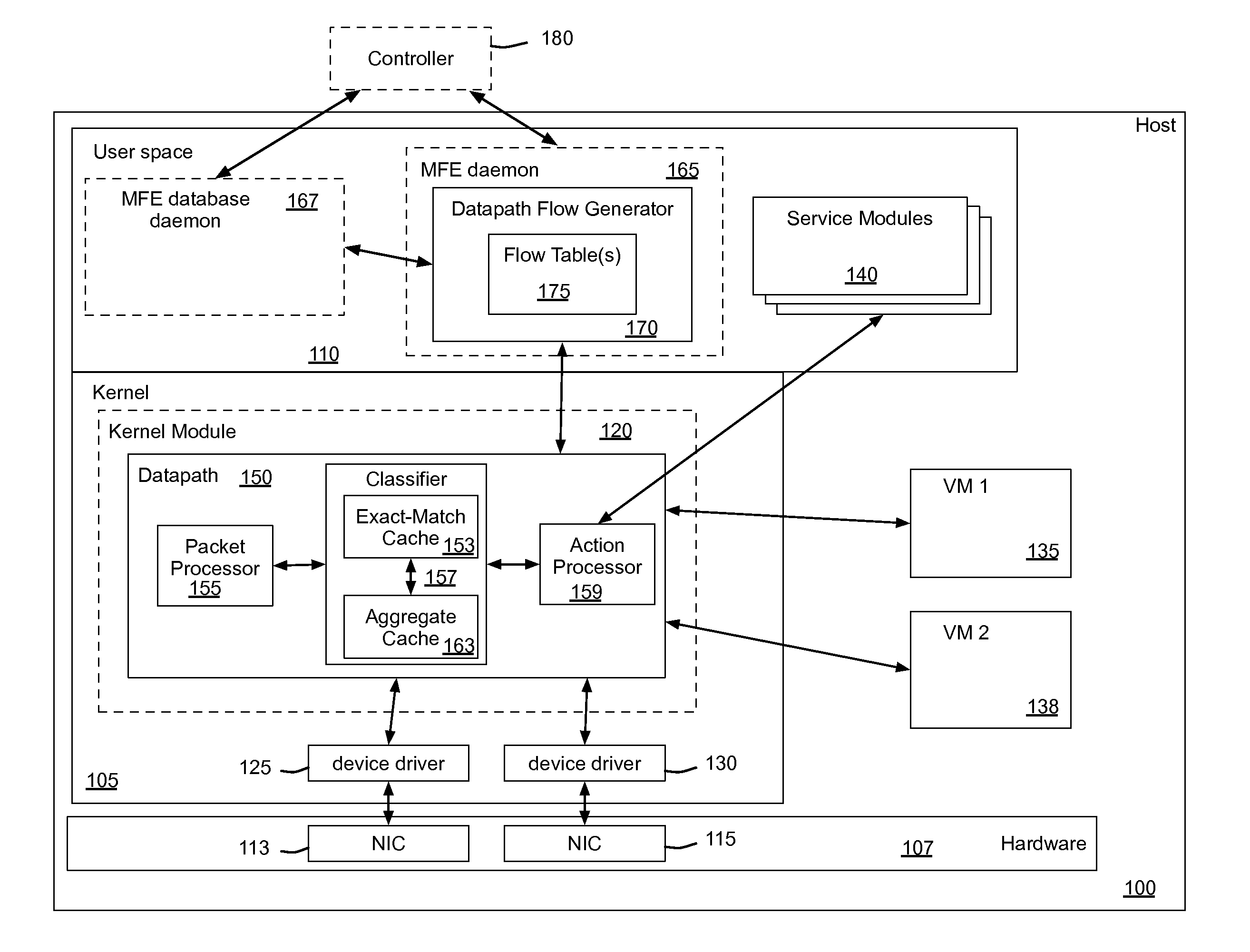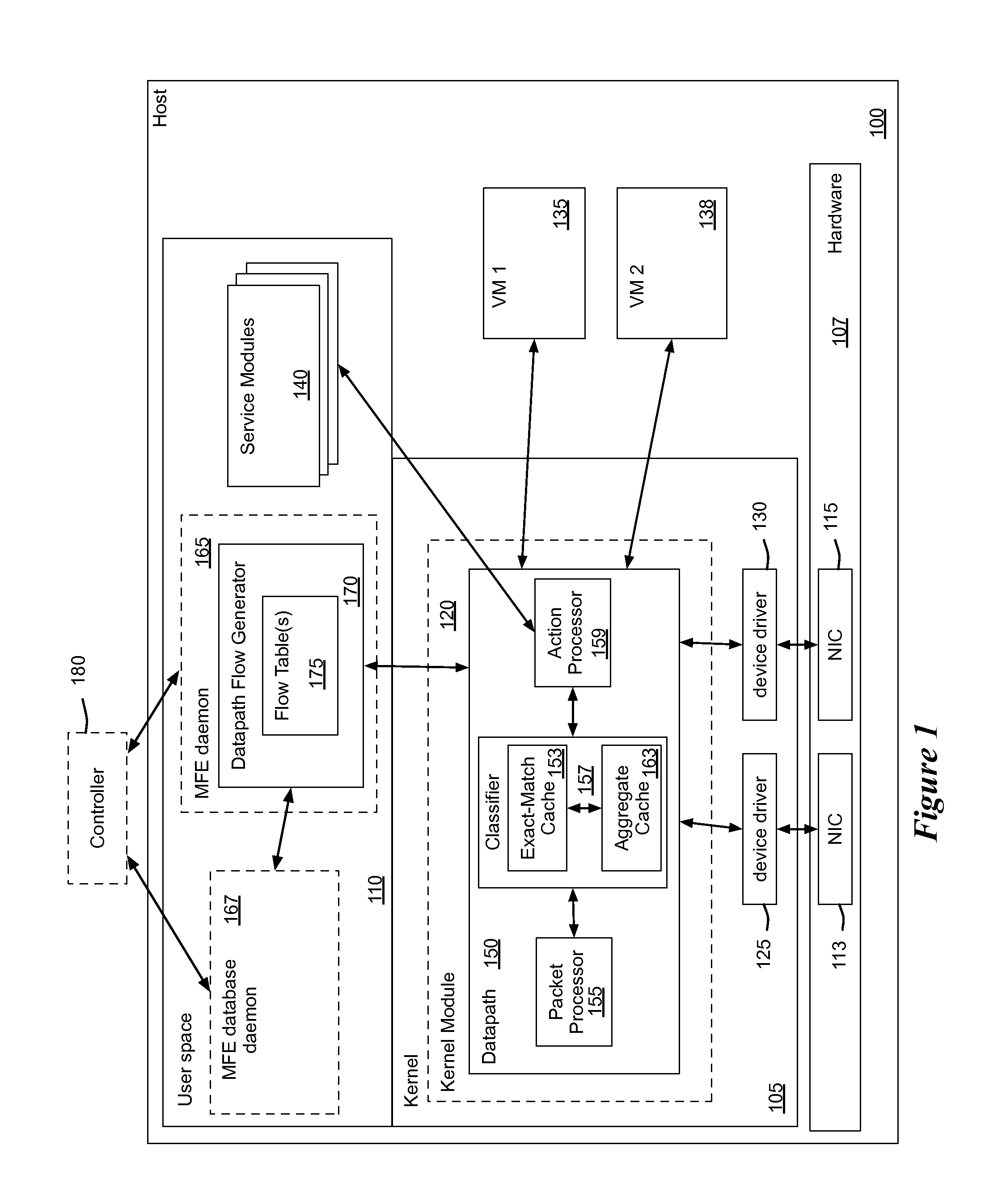Caching of service decisions
a service decision and cache technology, applied in the field of cache of service decisions, can solve the problems of computational cost of classification on a general purpose cpu using standard dram (e.g., on a standard x86 machine), and achieve the effect of saving computation resources for the host machin
- Summary
- Abstract
- Description
- Claims
- Application Information
AI Technical Summary
Benefits of technology
Problems solved by technology
Method used
Image
Examples
Embodiment Construction
[0038]In the following detailed description of the invention, numerous details, examples, and embodiments of the invention are set forth and described. However, it should be understood that that the invention is not limited to the embodiments set forth and that the invention may be practiced without some of the specific details and examples discussed.
[0039]Some embodiments provide a managed forwarding element with a hierarchy of cached flow entries for processing packets. Specifically, some embodiments include an exact match cache, an aggregate flow cache, and a set of staged flow tables for full classification operations. The managed forwarding element, upon receiving a packet, first checks for a match in the exact match cache, then (if no match is found) checks the aggregate flow cache, and only performs the full classification operations using the staged flow tables if no matching flow entry is found in either of the caches.
[0040]In some embodiments, the managed forwarding elemen...
PUM
 Login to View More
Login to View More Abstract
Description
Claims
Application Information
 Login to View More
Login to View More - R&D
- Intellectual Property
- Life Sciences
- Materials
- Tech Scout
- Unparalleled Data Quality
- Higher Quality Content
- 60% Fewer Hallucinations
Browse by: Latest US Patents, China's latest patents, Technical Efficacy Thesaurus, Application Domain, Technology Topic, Popular Technical Reports.
© 2025 PatSnap. All rights reserved.Legal|Privacy policy|Modern Slavery Act Transparency Statement|Sitemap|About US| Contact US: help@patsnap.com



